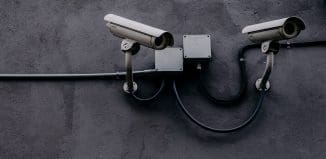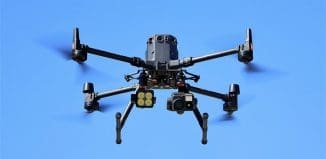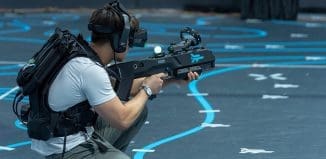Police Covering Tech Gap
This post is also available in:  עברית (Hebrew)
עברית (Hebrew)
A 21st-century police vehicle is a camera, cellular link, and computer system. Police who investigate crime scenes can record every detail of the location and let jurors inside a 3D reconstruction.
Inside the Carrollton Police Department at Carrollton, Georgia, two large LCD screens are divided into smaller squares. Each represents dozens of cameras scattered across the city. Most of them are there to record accidents that could take place at intersections. Outside, police cruise the streets in patrol cars equipped with laptops and portable devices that can record fingerprints.
However, none of the technology replaces the need and instincts of a police officer, but it does save time.
According to times-georgian.com, police teams ride around in a specially equipped SUV that has four cameras mounted on the outside. They are pointed in such a way as to be able to record the license plates of the vehicles around them. The system is known as Automatic License Plate Reader. It records the numbers on the plate and checks them against an online database over a cellular network. If the numbers it reads bring back a response, then police have probable cause to pull the car over.
The system isn’t perfect; sometimes it misreads the license plate. The officer is supposed to double check the plate against info stored with the Georgia Crime Information Center (GCIC), a high-tech group that maintains computerized records linked to law enforcement agencies across the state. There’s also a National Crime Information Center, and the license number is checked against it as well.
Also inside the car, mounted overhead, is a small screen and controls for two other cameras – a dash camera that can record an officer’s activities outside the vehicle, and one that allows officers to watch a suspect in the backseat, or cage, of the vehicle.
In the old days, criminals and others who might know of crimes would pass information about those wrongdoings in conversations that might take place in person, at a bar, or any other venue. But now those same conversations take place on social media.
Sgt. Blake Hitchcock works with the department’s criminal investigations division, inside a specialized part of that unit that deals with computer data, whether it is on a desktop, a laptop, a tablet – or even a smartphone. These devices can be a treasure for law officers. When officers need to get into a cellphone and extract that data, they have sophisticated tools that will get everything: including passwords, chats on social media, and even a timeline of places anyone has visited, built on the GPS signals recorded by the phone every time it pings out a signal.
Such access worries some people, and for good reason. The same technology that can be used in the lawful pursuit of crime can be used for nefarious purposes as well. Hitchcock says police searches of cellphones are done only if the owner consents to a search, or as the result of a court order.
Hitchcock can pull the same kinds of information from computer disk drives, doing so in such a way that the contents of the drive are not altered and the police can obtain a perfect copy of what’s on the computer hardware.
In short, investigators can collect an amazing amount of information at the scene of a crime. But information, or raw data, is useless unless it can be interpreted.
“A key piece of our equipment is the mind of the crime scene investigator, because he has to figure out where to look and know what he’s looking for, otherwise, important evidence could be overlooked.” said Steve Foster, a crime scene specialist at the GBI, an agency that has investigative resources that most cities don’t have and can deploy their arsenal.
For example, GBI agents have the ability to do DNA analysis using only a few skin cells. But that ability depends on the agents actually finding that evidence, and doing so requires the skill of examining a scene correctly.
The advantage of police technology, Foster said, is that it helps investigators discover clues that they might not otherwise find. Fingerprints, he said, sometimes don’t show up well using the old dusting techniques – but they might show when put under ultraviolet or infrared light source, or scanned with other advanced equipment.





























